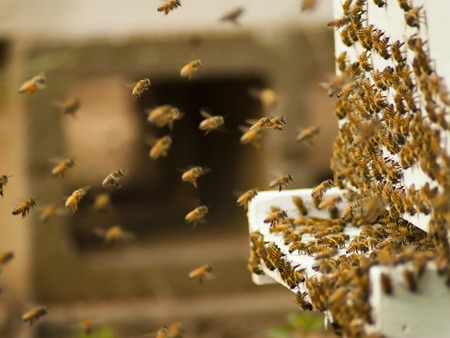Bee Colonies Shown to Be Increasing
August 17, 2017
Bee Colony Collapse, Honey Bees
After studying the considerable losses in honeybee colonies in recent years, authorities, including the Department of Agriculture, had stipulated that the causes behind the decline were disease and parasites, leading to the mysterious phenomenon colony collapse disorder (CCD). The average loss in 2016 reported by beekeepers among their commercial hives, per the U.S. Agriculture Department, was about 44 percent. Such a loss among livestock like cattle or pigs would have likely lead to a national panic, just to provide perspective.
A Positive Trend
However, despite the ominous state of the honeybee in the U.S. and worldwide, there is some positive news to be had—a recently released survey by the Agriculture Department reports that honeybee colonies in the U.S. rose this year from the previous one. Specifically, the number for U.S. commercial bee colonies rose about three percent from 2.8 million on April 1, 2016 to 2.89 million on April 1, 2017. The survey indicated that the surprising increase was produced due to beekeepers adding additional honey bees to compensate for the previous years’ swift losses. Three percent may not sound like that much more, but an extra 90,000 un-collapsed colonies likely does.
Behind the Decline
As stated previously, disease and parasites are cited as the causes for most of the overall decline in bee populations, with the effects of CCD especially raising concerns among beekeepers and entomologists for well over a decade. A devastating enigma that researchers are only beginning to understand, colony collapse disorder is when most if not all a hive’s worker bees suddenly abandon the hive without explanation, leaving only the queen bee, larvae, and immature bees behind. Fortunately, many beekeepers have vastly improved the conditions of their hives, and this has led to the disorder steadily decreasing over the years.
The Role of Pesticides
Another factor many believe to be contributing to the fluctuations within honeybee populations would be pesticides. While pesticide manufacturers have argued their products only slightly contribute to bee populations, some environmental groups consistently have expressed concern regarding the correlation between neonicotinoid pesticides and the over 90 percent loss over 20 years in pollinator populations, such as monarch butterflies and wild bees.
With all this mind, Illinois beekeeper Tim May, who is also vice president for the American Beekeeping Federation, has said that it is hard to point to specific factors that have been causing the decline of honeybees and other pollinators. “It’s really tricky,” May said. “Maybe it’s pesticides, maybe it’s not, but when I eliminate everything else, it’s a distinct possibility.”
Copyright: jmjustice91 / 123RF Stock Photo


.jpg)



